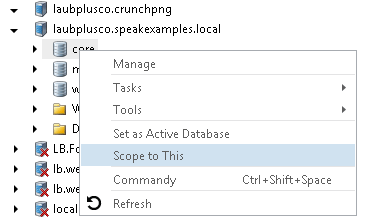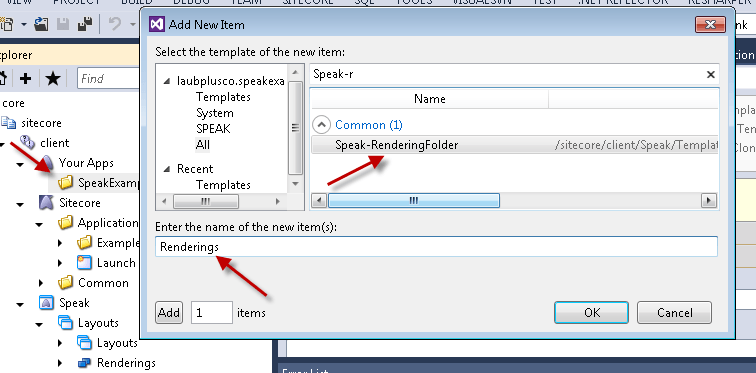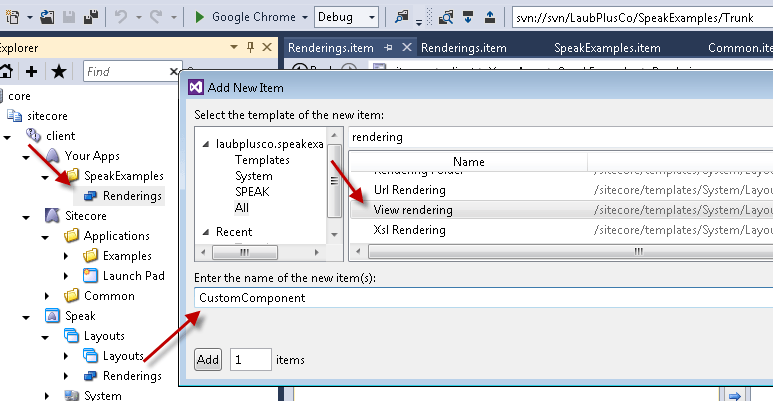This post is part 2 in a series showing how to create custom Sitecore SPEAK components.
In this post I will show how to setup a custom SPEAK component in Sitecore. It is actually just setting up a rendering in Sitecore and then creating a rendering parameters template for it which is actually just a template item residing beneath the rendering item.
Registering a SPEAK component in Sitecore
To do this we do not need to enter Sitecore at all, what we need to do is to use Sitecore Rocks as mentioned in part 1. To make it even more easy then scope the Sitecore Explorer to the core database in which you want to register the control.
All SPEAK applications should be self-contained when following the general SPEAK architecture which I think is one of the most significant architectural improvements to Sitecore which SPEAK introduces and Rocks makes possible.
So first we create a new SPEAK application to which the component belong and then we’ll create a Speak-RenderingFolder item under the application item.
In this folder we create a new View Rendering item.
And then we’ll set the path to a MVC Razor view, more about how these look in the next post in this series.
Next step is to define which rendering parameters are applicable for this rendering. To do this create a template item beneath the newly created rendering item andthen add the desired parameters as fields on the template.
Optionally set the desired bindmode for each parameter.
The bind modes are not really documented in the documentation available on SDN.
But a bit of investigation quickly shows that bindmode=read means that you cannot set the parameter on the rendering in Rocks. If anyone can provide a clear written description of bindmodes please write a comment - and Sitecore, please update documention.
Then go back to the Rendering Item and set the Rendering parameters item to the template item you created.
Now when the rendering is added to the presentation of an item it can be opened in Rocks and the parameters are shown as properties.
If the component which you are creating inherits from one of the base components and is defined using one of these on the client in JS (see part 1) then you should let the template item inherit from the desired base template.
That was it now just a quick summary:
- Create custom SPEAK component renderings which are application specific as descendants to the application item.
- Rendering parameters in Sitecore are actually just a good old template which sets the properties for a rendering when it is opened in Rocks.
- Let the rendering parameters template derive from one of the predefined base templates in SPEAK if the component type is created using the createBaseComponent function.
- Parameters can have different bind modes.
The next post will show how to write the Razor view for the SPEAK components and the final post in this series will show a full example of creating a SPEAK control from scratch.







